Ontology Viewer
- 3 minutes read - 540 wordsStatus
Minimum Viable Product
Introduction
The ontology viewer is a web-based tool for viewing ontologies expressed in the Web Ontology Language. Currently, we only have a publication of the IEC-CIM (which can be found here), but we hope to change this soon and publish more ontologies. If you have a suggestion for an ontology that you’d like to see published in our web interface, please leave us a message.
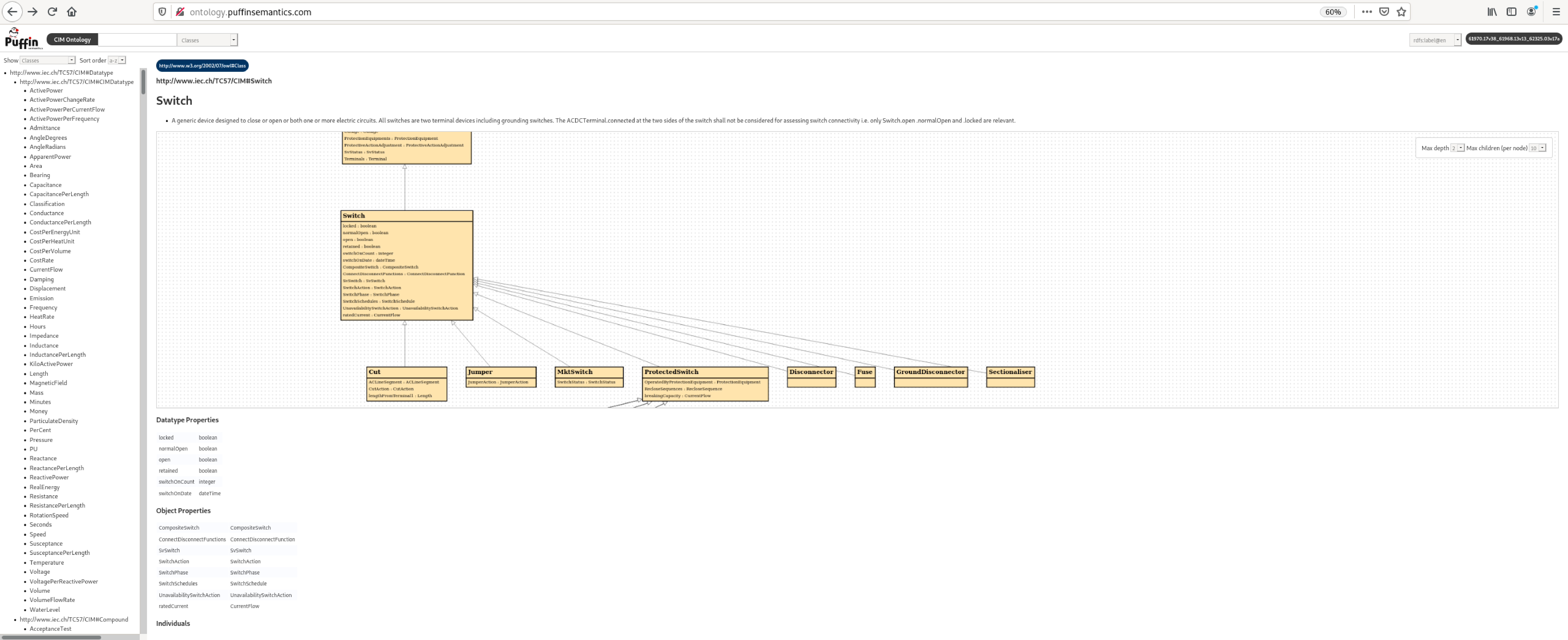
video version
How to use the Ontology viewer
Below some quick suggestions on how to use the ontology viewer.
Finding a concept
Ontologies contain formal definitions of objects, properties and relationships. In this publication you can search these definitions in two ways.
Via the search bar
When typing in the search bar, the publication will make suggestions based on what you have typed. If you select one of these suggestions it will directly go to the selected object.
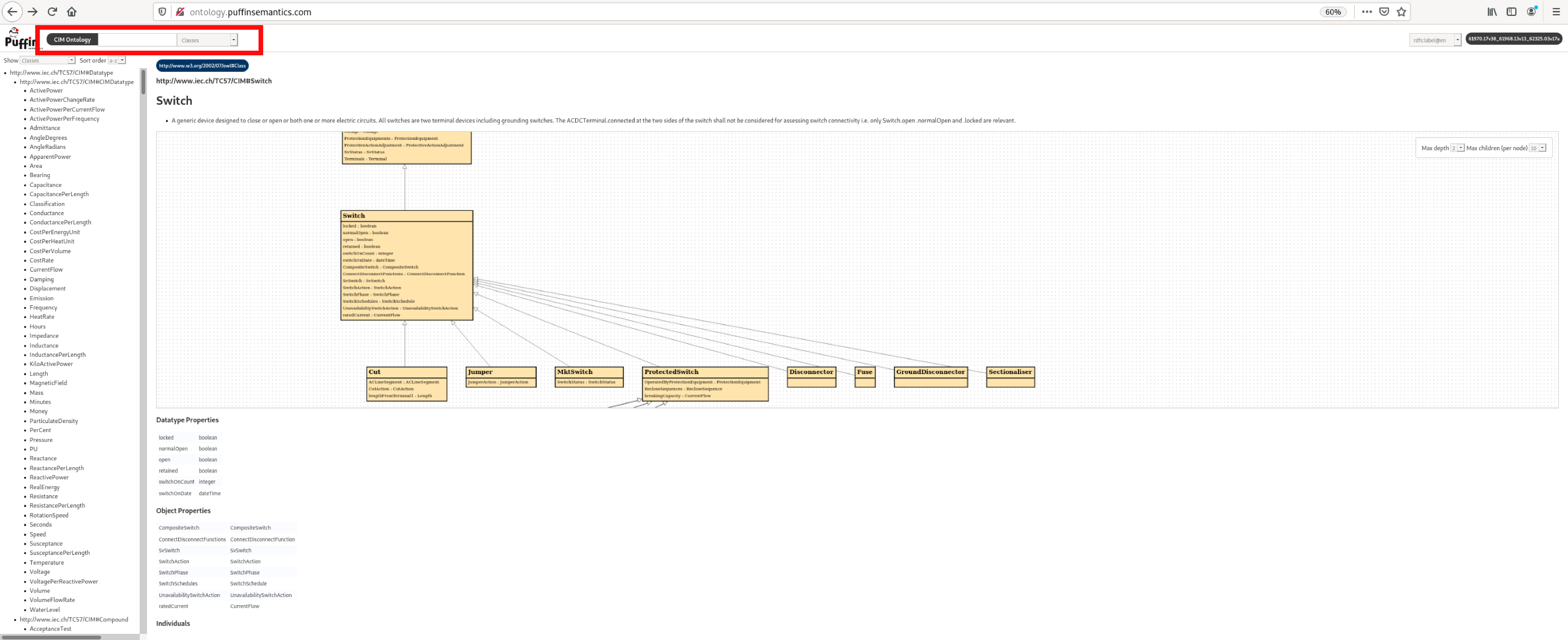
Via the ontology overview
In the ontology overview. All concepts are shown as a hierarchy (for Classes, ObjectProperties and DatatypeProperties). Within the various branches of the hierarchy, concepts are shown alphabetically.
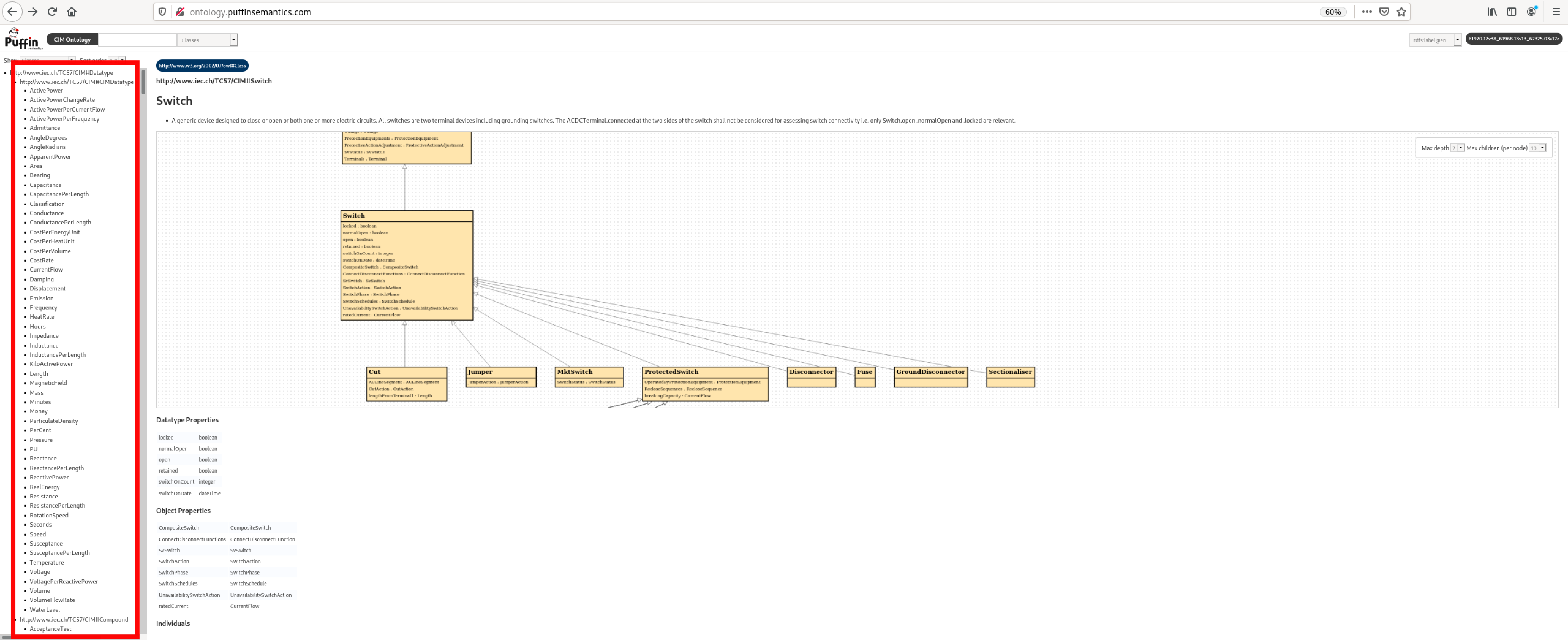
Set search parameters
The search bar and ontology overview only show definitions of one type at a time: Classes, ObjectProperties, DatatypeProperties or NamedIndividuals. Before you search, make sure you select the correct type from the drop down!
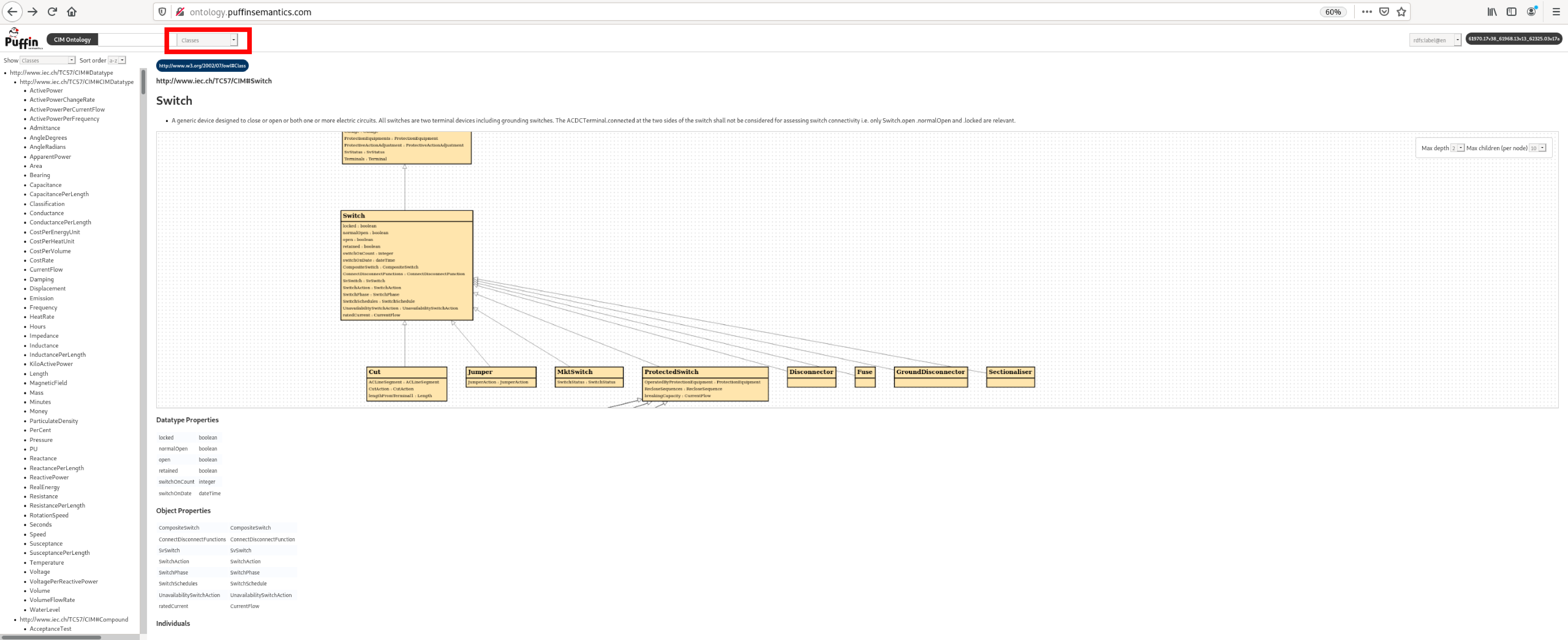
Rendering Labels
Any ontology can be rendered in multiple ways, be it in terms if the IRI, a language specific label. In the drop down menu you can select how the pages should be rendered.
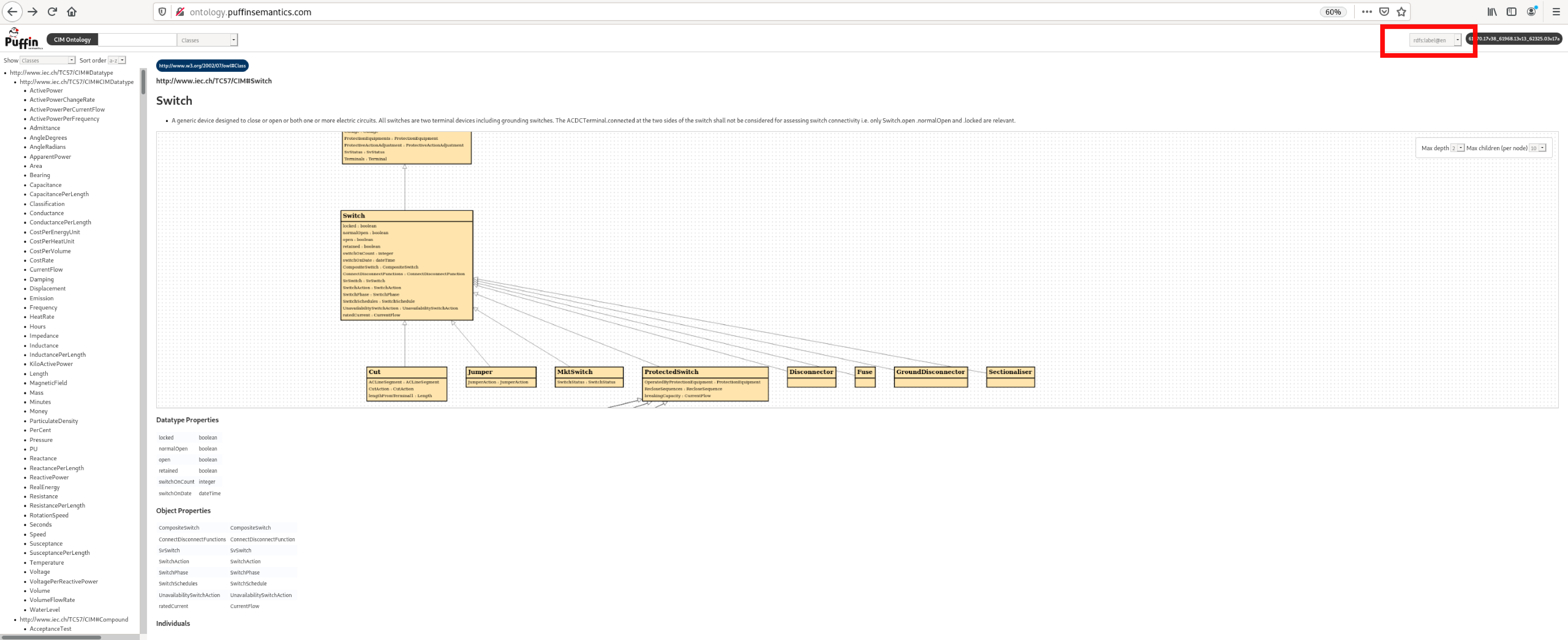
Available information in the object overview
The object overview is the main part of the publication. Here you find all the relationships, attributes and annotations about a given concept. Each of the links is itself a navigation button towards that concepts own definition page. So, next to the search bar and the ontology overview, the object overview is actually a third way of navigating th ontology.
Class
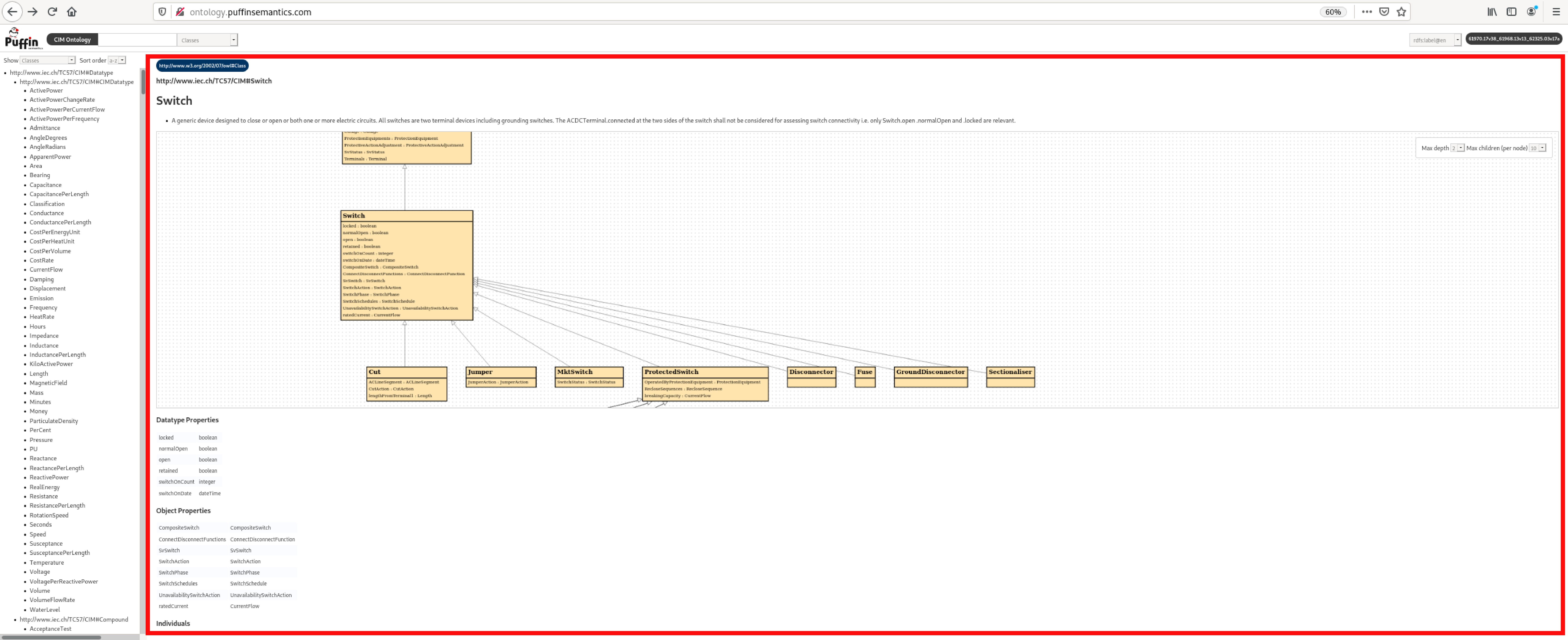
The object overview shows the:
- OWL construct used to define the concept (rdf:type)
- the definition of the concept (rdfs:label)
- Any Datatype Property that has the Class in its domain
- Any Object Property that has the class in its domain
Setting the parameters for rendering the context diagram
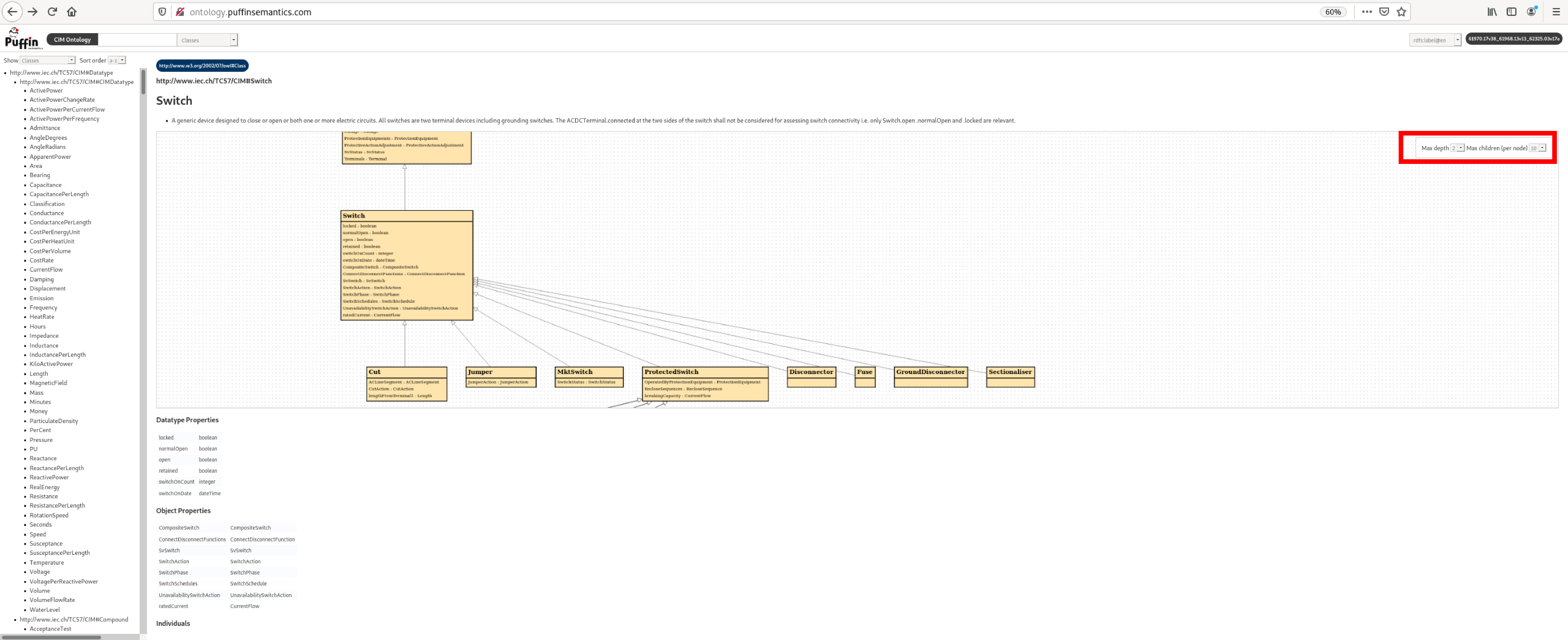
You can set the amount of objects you can see in the context diagram in two ways.
- Max depth sets the of transitive depth of super/subclasses that is shown.
- for example: if Max Depth is set to two, the diagram will show the super class and the super class’s super class, as well as its subclasses and its subclass’s subclasses
- Max children (per node) sets the number of subclasses of the selected class and its sublcasses that are shown.
- If Max children (per node) is smaller than the number of subclasses specified in the ontology, A random selection of the sublasses will be shown.
Ontology version information
Not all ontologies define/use their versions, but when they do, this information can be found here.
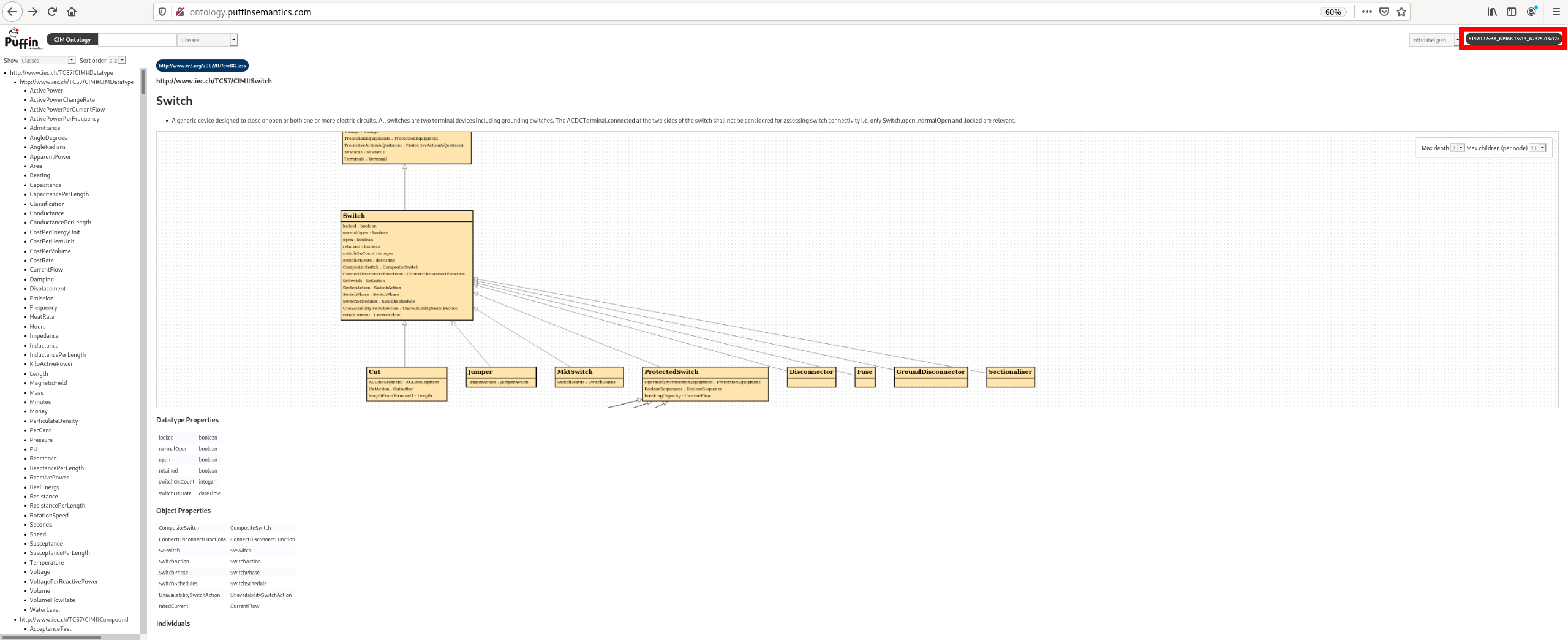
Planned Features
- More elaborate information in the object overview for ObjectProperties, DatatypeProperties and NamedIndividuals
- backward/forward navigation buttons
- persistent URI’s of the documentation pages
- Semantic path search: give 2 classes and the publication will find the shortest semantically meaningful path between them
- Publication of other ontologies than IEC-CIM
More suggestions? Leave us a message